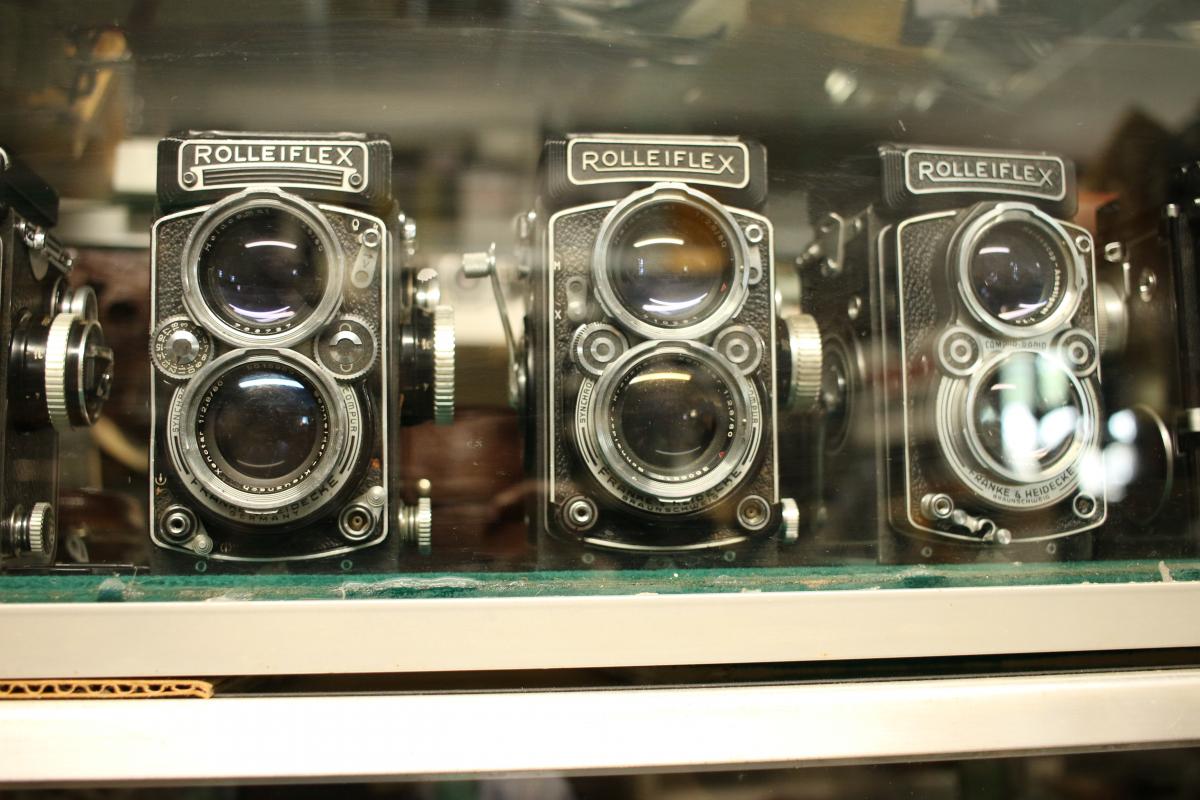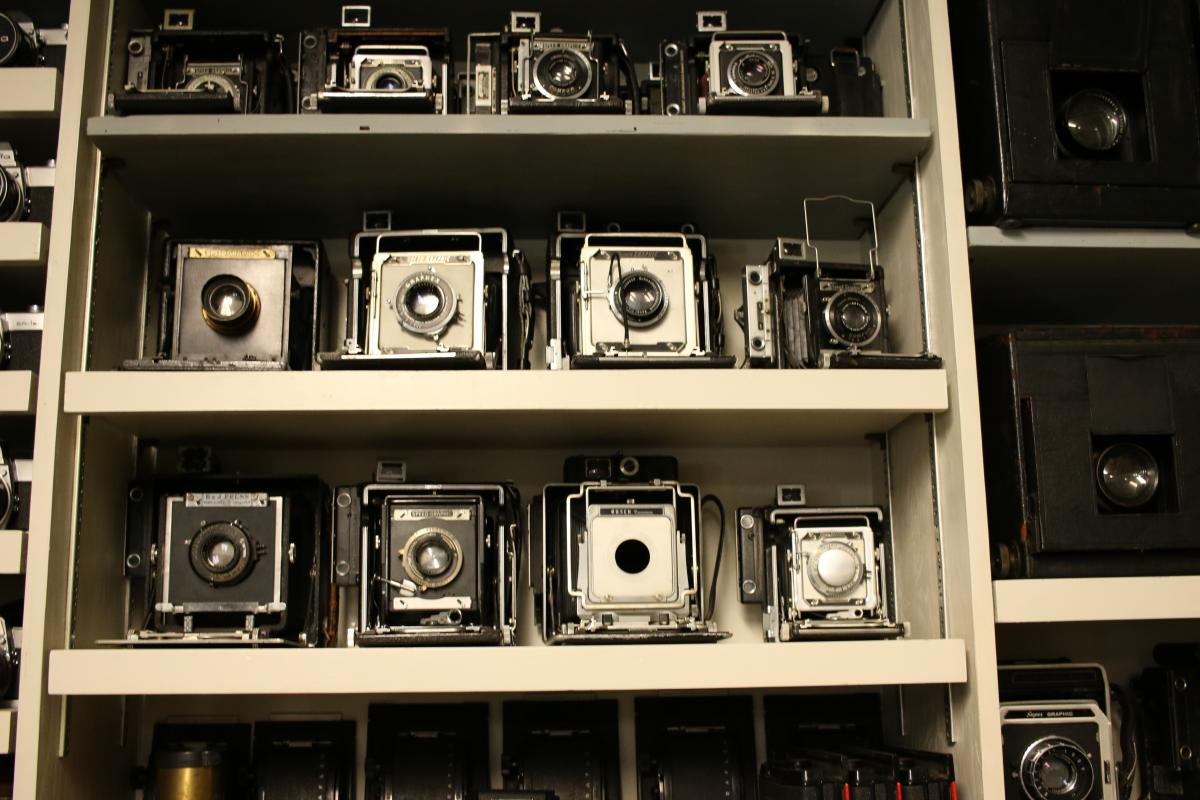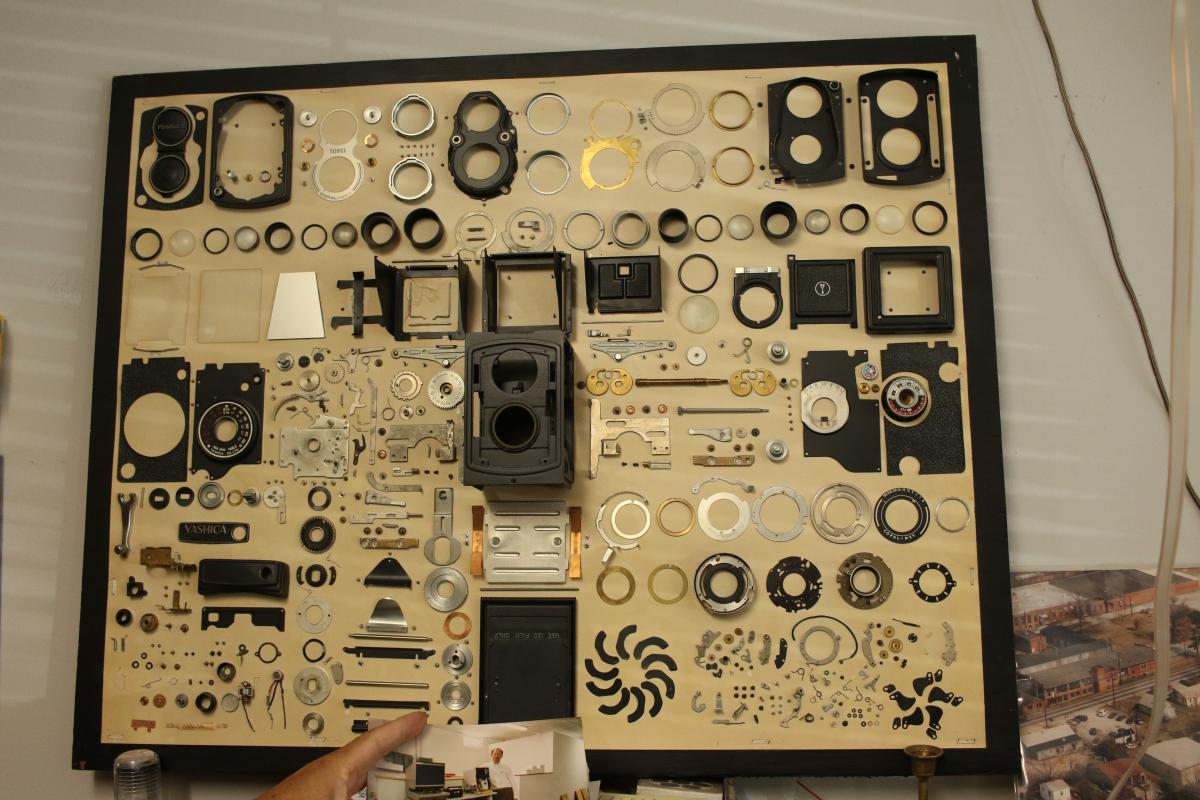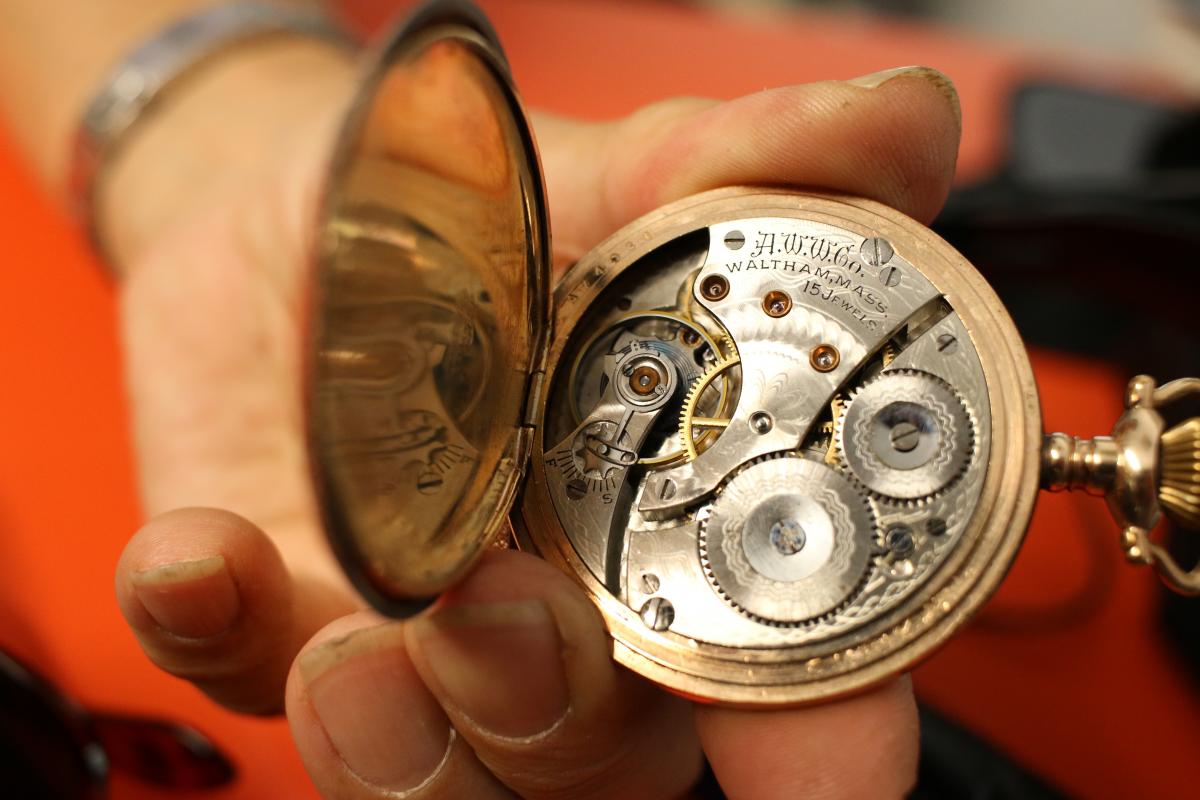Taking a picture these days is nothing like it used to be. With smart phones and digital cameras, instant gratification is a way of life.

But Ken Toda of High Point wants to slow things down, and in fact is making a business out of it. When it comes to cameras and film, Toda has both feet happily planted in the past.
For 36 years, Toda has run Huemaxx. Its mission: preserving and promoting non-digital, fully mechanical cameras, some of which date back to the 1800s. He runs the shop by himself, by appointment only. It's more of a display warehouse than a traditional storefront, Toda says.
"So what I do here now is sell/buy/trade only, only vintage antique collectible equipment - no digital cameras, no repair on new digital equipment."

The shelves of Huemaxx bulge under the weight of endless rows of cameras. Lenses stare from a wall like a group of sharply dressed Cyclops. Every object here has been or could be repaired by Ken, by hand. The same doesn't hold true for their digital counterparts.
"If it's [a] digital camera, new device with microprocessors, if something goes crazy – done. Throw it away. We can't repair. You'd have to replace the whole half of guts inside.”
This is more than a business for Toda, it's personal. Cameras played an important role during pivotal moments in his life. Growing up in Japan, he fell in love with photography at a young age. It was then that he witnessed his own school burning down, and captured it with a Kodak “Brownie” camera. As a teen, he was taking pictures at Osaka's World's Fair, when by chance he met an interior designer who was instrumental in getting him to the U.S. He then took commercial photos for decades as part of the thriving High Point Furniture Market.
"So, I feel I'm just born North Carolinian. I'm a southerner, I'm a Japanese, that's what it is."
The digital revolution didn't happen overnight. In 1990, Ken was invited to Eastman Kodak and shown some early digital products. He saw newspapers quickly adopt them, trading, in Ken's words “quality for speed.” Next were the commercial and industrial sectors, with portrait and wedding photographers putting the final nail in the analog coffin.

But according to Toda, there's a renewed interest in traditional photography.
"The old ways, you know, people remember. Also, new people, Millennial generation [have] never seen it. They just want to know what {their] parents' and grandparents' generation had done."
That's the romance of film photography, according to Ken. But is that enough to get to people to his shop? Why bother with the trouble of loading film and waiting for it to develop, leaving the results up to chance?
Toda says it's worth it. "So they have something to hang on to, something tangible that can be handled 45 years from now.”
One aspect of the “old days” that Ken is considering restarting is his film developing lab. Work all but dried up years ago, and Ken had to let his staff go. But in the past few years, he's been getting more and more requests to open the darkroom back up. People may be ready, he says, for less convenience and more knowledge of how cameras work.
Photography is the perfect marriage of science and arts. 50/50, ok? So we having so much artistic, and the science just about gone cause silicon valley's accomplishments. But, I think we should come back to science and understanding. That's why again film is important.

Inside the labyrinth of Huemaxx, Toda motions to a glass display case and reveals a shiny copper pocket watch hidden in the back. He recently began repairing these, too. The old timekeepers have lots in common with cameras - it takes gears, knowledge, and someone like Ken Toda to keep them working.
300x250 Ad
300x250 Ad
